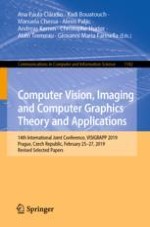2020 | OriginalPaper | Buchkapitel
Virtual Reality System for Ship Handling Simulations: A Case Study on Nautical Personnel Performance, Observed Behaviour, Sense of Presence and Sickness
verfasst von : Chiara Bassano, Manuela Chessa, Luca Fengone, Luca Isgrò, Fabio Solari, Giovanni Spallarossa, Davide Tozzi, Aldo Zini
Erschienen in: Computer Vision, Imaging and Computer Graphics Theory and Applications
Aktivieren Sie unsere intelligente Suche, um passende Fachinhalte oder Patente zu finden.
Wählen Sie Textabschnitte aus um mit Künstlicher Intelligenz passenden Patente zu finden. powered by
Markieren Sie Textabschnitte, um KI-gestützt weitere passende Inhalte zu finden. powered by
